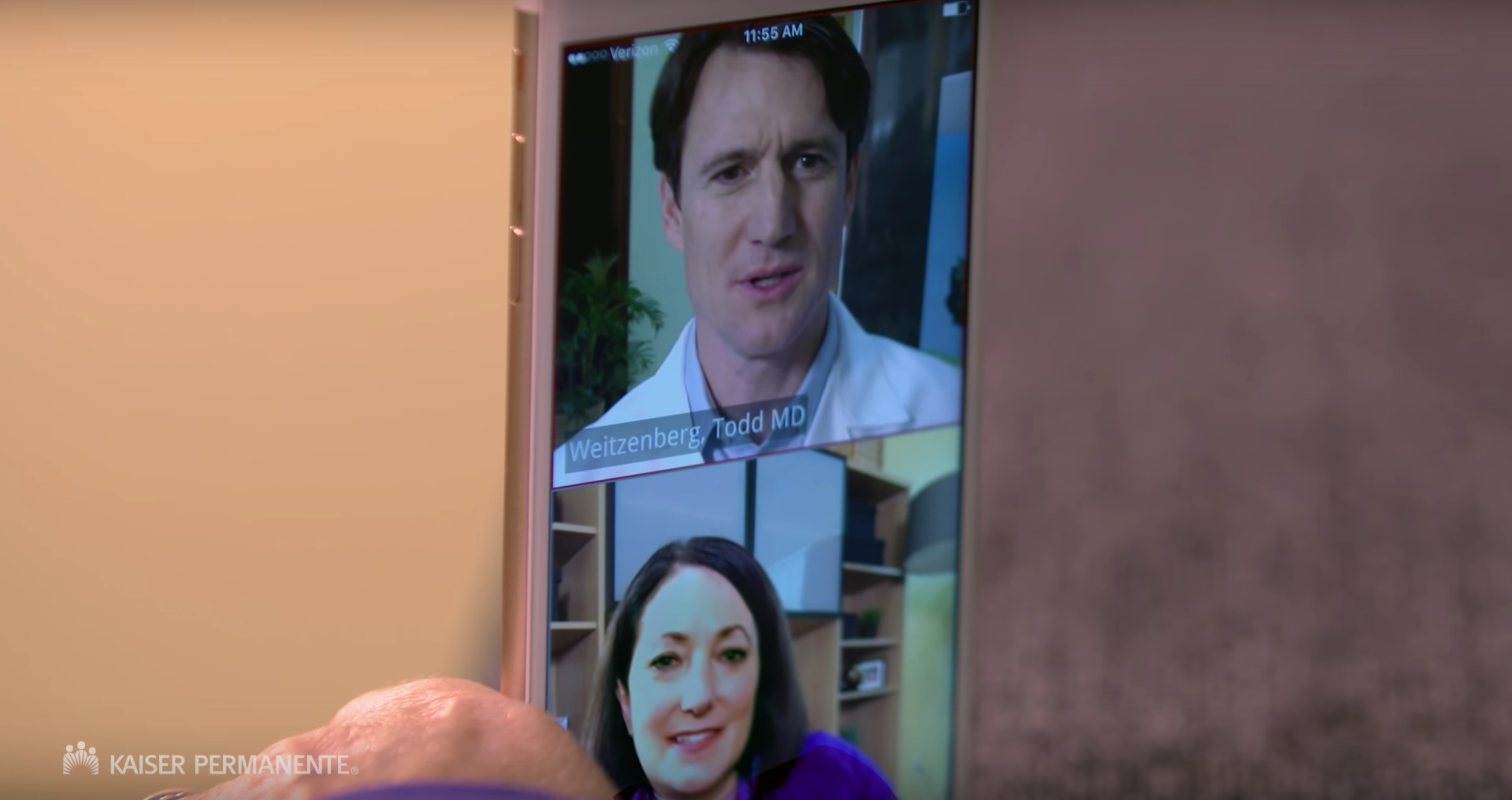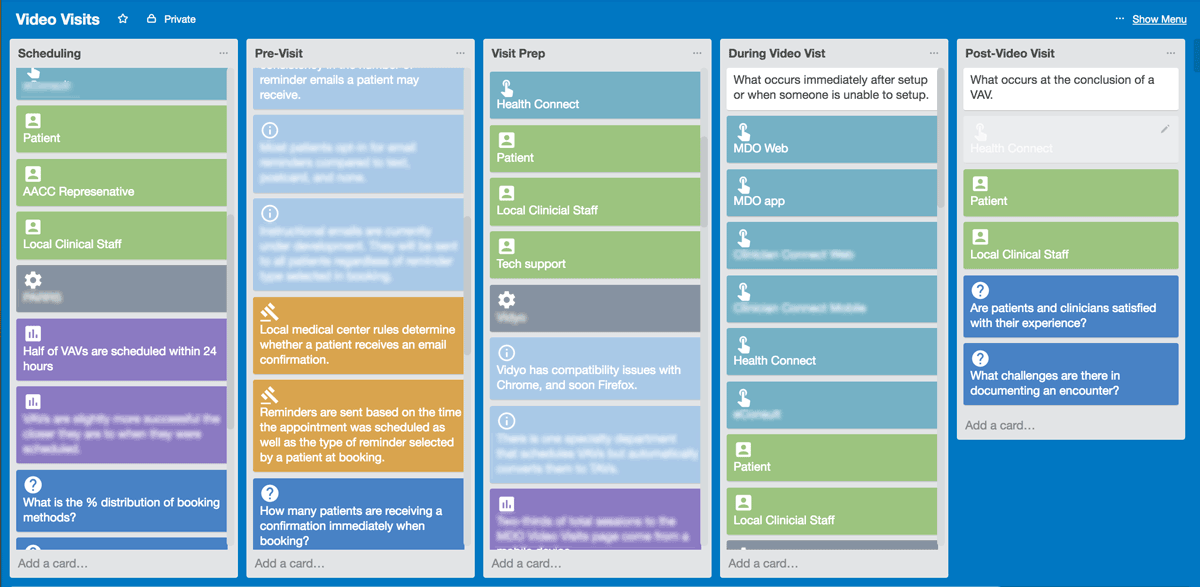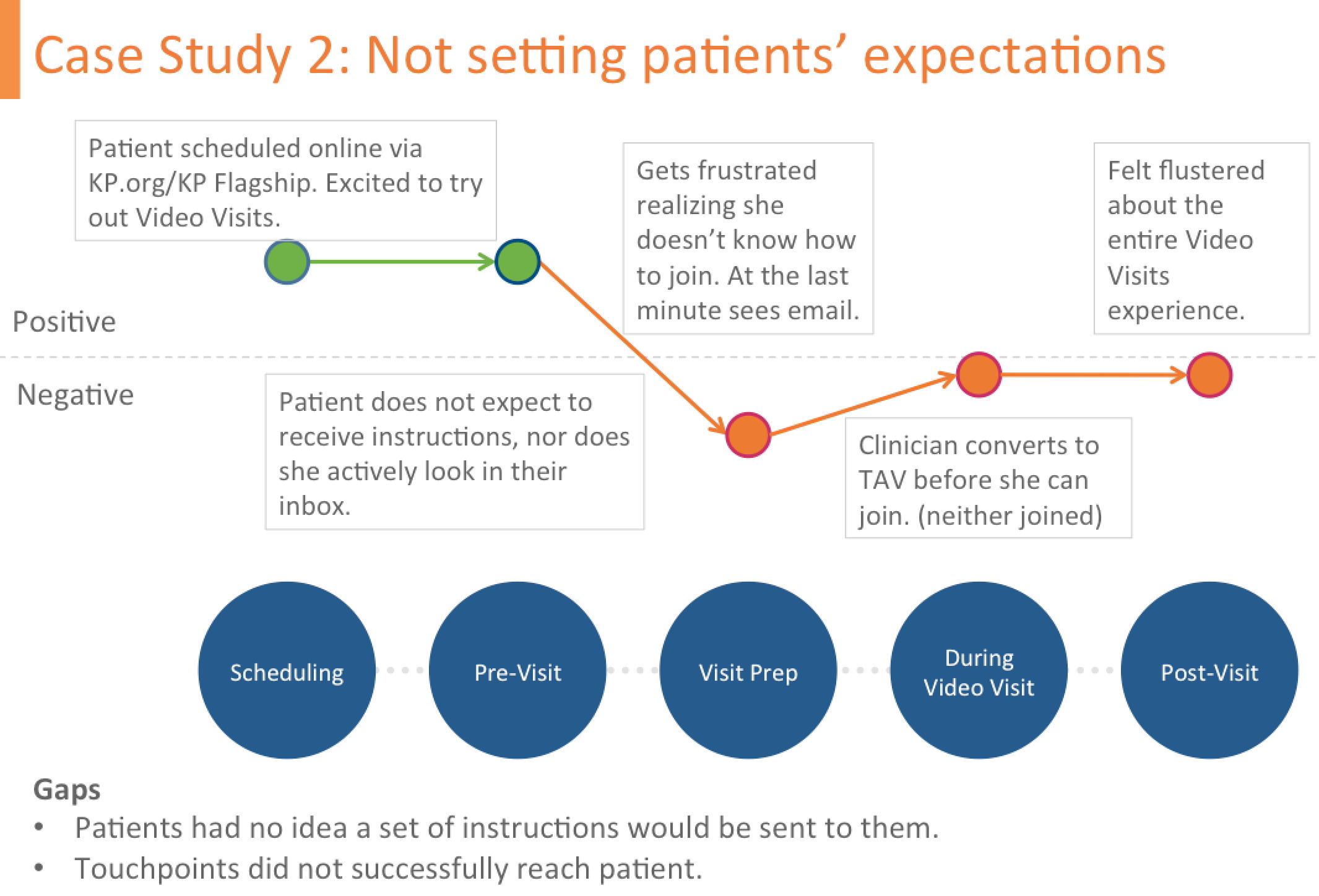Video Visits
Methods: User Interviews | Service Design
Video Visits is a telehealth service that allows Kaiser Permanente patients get faster access to care using a camera equipped computer or mobile device.
The research project was intended to help further streamline the Video Visits experience and improve connectivity rates. Video Visits mixes service design and interaction design throughout a variety of different touchpoints.

At a Glance
Project Team
- My role: Lead Researcher
- Two user researchers providing support
- A cross-team group responsible for various service touchpoints.
Goal of Project
- Understand what problems users experience and why those issues contribute to connectivity issues.
- Focus on the end-to-end Video Visits service to identify areas for improvement.
- Triangulate data to increase confidence we’re addressing the most important issues.
Outcomes
- Instructions were emailed to all patients within 24 hours of appointment.
- A service design blueprint that captures quantitative and qualitative data for all teams to reference.
- Findings became a key factor in renaming an app that contains Video Visits from “KP Preventive Care” to “My Doctor Online”
- Month-to-month connection rate improved by 5%.
Stakeholder Interviews: Determining Research Scope
I met with the Video Visits team to learn what they hoped to learn and what decisions I would be informing. I requested quantitative data to get a sense of what was happening with Video Visits. From the discussions and the analysis of the data I learned…
Project Challenges
- Quantitative data focused on outcomes and didn’t measure performance across different touchpoints.
- The team had little to no consensus on which areas were problematic for end-users.
- Separate teams had scattered data and was not immediately accessible.
User Recruiting We wanted to identify what contributed to unsuccessful Video Visits. To increase the rate of connection, we chose to focus on patients who experienced two Video Visit outcome groups.
- “Patient did not join”: A Video Visit where the clinician joined but the patient did not.
- “Neither joined”: A Video Visit where neither the patient nor clinician joined.
Developing Study Approach
The team had been struggling for over a year to improve connectivity rates. I suggested that we learn about the end-to-end experience and consolidate findings in one data source. This would give each team direction on how to do further analysis.
Method: User Interviews I interviewed patients who recently had an unsuccessful appointment and interviewed them about their end-to-end experience. Because of the complexity of the service, I aimed to speak with patients until we reached data saturation. As a result, two of my colleagues helped conduct interviews to maximize our overall reach.
Key Research Findings
- Onboarding touchpoints did not always reach patients, resulting in them not know how to setup Video Visits.
- Patients used the wrong Kaiser Permanente app due to naming similarities between two apps. (Kaiser Permanente Preventitive Care vs Kaiser Permanente)
- Some patients did not know they had an appointment scheduled.
- Some clinicians decided to call in advance by phone instead of having a Video Visit.
Deliverables
Service Design Blueprint We created a service design blueprint to capture qualitative and quantitative data points. This was a high-level blueprint that captured findings which helped build transparency across teams.

Journey Maps Based on the user interviews, I was able to produce interactive journey maps for common scenarios. This helped develop empathy for stakeholders about how Video Visits actually work out.

Outcomes
- Month-to-month connection rate improved by 5%.
- The findings led to the implementation of an email being sent to all patients 24 hours before their appointment. This email gives them direct access points to the web app or mobile app for Video Visits. Previously, not all patients would receive email instructions.
- Findings from this research became a key factor in rebranding the “KP Preventive Care” app to “My Doctor Online”.
- High-level service blue print that captures existing data, group knowledge, and standing questions.
- Qualitative findings led to informative quantitative data inquiries. This is helping us focus future connection rate efforts.
Future Research
Patients only have an understanding of what they experienced, and can only guess what occurs on the clinician side of Video Visits. We decided to interview clinicians, particularly those with low connection rates, to better understand how Video Visits functions with our internal users.